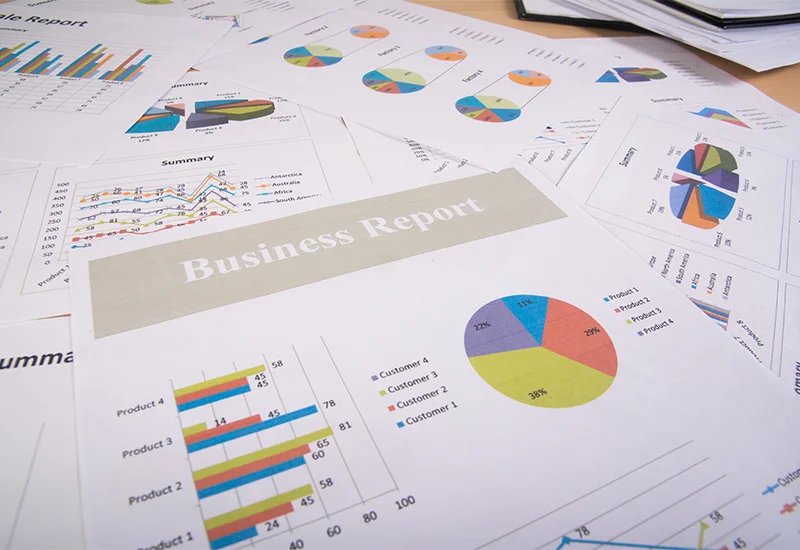It’s clear that Making Tax Digital is reshaping how you manage your taxes with HMRC, moving away from traditional paperwork to real-time digital record-keeping. By using HMRC-compliant software, you reduce errors and gain a more accurate, up-to-date financial overview. While this change brings improved efficiency and fewer penalties, it also offers you the chance to be proactive with your finances. To understand how this impacts your income tax and beyond, explore official guidance at Making Tax Digital for Income Tax and the broader context on Wikipedia. Accountants are also evolving, as detailed by ICAEW.

Key Takeaways:
- Making Tax Digital (MTD) is revolutionising the UK tax system by replacing paper-based processes with digital record-keeping and real-time online submissions, improving accuracy and efficiency. Learn more about the initiative on Wikipedia.
- VAT-registered businesses are already required to comply with MTD, and soon income tax and corporation tax will also transition to this digital framework, as detailed on the official government page.
- Using HMRC-compliant software under MTD helps businesses maintain accurate records, reduce workload, and gain quicker access to up-to-date financial information, resulting in fewer errors and penalties.
- The digital transformation encourages accountants to evolve into proactive advisers, utilising real-time data to support clients in making informed financial decisions throughout the year.
- Making Tax Digital offers business owners enhanced control over their finances, helping them avoid last-minute stress and stay organised, as outlined in the ICAEW tax guide.
Digital Revolution: The Core of Making Tax Digital
The introduction of Making Tax Digital marks a profound pivot in how HMRC interacts with taxpayers. This digital revolution ensures that tax management is no longer a once-a-year task but an ongoing process supported by technology. By digitising records and enabling real-time submissions, you can benefit from more accurate tax information throughout the year, reducing the chances of errors that commonly arise with manual processes. The transformation is driving greater transparency, allowing both HMRC and businesses to track financial data as it happens rather than relying on retrospective declarations.
For businesses already using MTD-compliant software, there’s a noticeable shift in how financial data is handled daily. Instead of sifting through piles of paperwork at tax season, digital tools automate much of the record-keeping and submission duties, giving you instant insights into your tax position. This proactive approach not only minimises errors but also creates opportunities to plan cash flow more effectively and make data-driven decisions that support growth. With MTD rapidly expanding beyond VAT to income tax and corporation tax, embracing this digital revolution is important to staying ahead in a modern tax environment.
The Shift from Paper to Digital
Moving from paper-based tax documents to fully digital records represents one of the most tangible changes introduced by Making Tax Digital. Businesses are now required to keep digital records using HMRC-approved software, eliminating the need for traditional spreadsheets or physical receipts in many cases. This not only streamlines record-keeping but also accelerates the submission process, as data flows directly from your accounting system to HMRC.
This shift means that the familiar end-of-year scramble to compile and submit returns is giving way to a continuous, real-time approach. You maintain accurate, live records of your income and expenses, avoiding transcription errors often caused by manual entries. For example, VAT-registered businesses have already experienced a reduction in late submission penalties and more accurate VAT repayments, thanks to instant validation of submitted data. Adapting to this digital workflow may require an initial learning curve, but the efficiencies gained quickly outweigh the transition efforts.
Key Features of the MTD Initiative
Understanding the specific functionalities embedded within Making Tax Digital highlights why it is transforming tax administration in the UK. At its core, MTD mandates the use of HMRC-compliant digital software that connects directly to HMRC systems. This integration facilitates real-time data submission, substantially lowering the risk of errors and simplifying compliance procedures. You benefit from automatic calculations that reduce the need for manual inputs, thereby decreasing the chance of mistakes that may result in penalties.
This initiative also introduces digital dashboards that provide immediate visibility of your tax liabilities and payment deadlines. These tools help you stay organised and plan your finances more efficiently. Real-time updates mean you’re not caught off guard by unexpected tax bills or fines. Additionally, MTD supports enhanced record-keeping standards, requiring you to maintain consistent data that can be easily reconciled during audits or reviews. Assume that by adopting these features, you are positioning your business for smoother, more accurate tax management moving forward.
- HMRC-compliant software mandatory for recording transactions
- Real-time digital submissions instead of periodic paper returns
- Automatic calculations reducing manual errors
- Digital dashboards for real-time tax position monitoring
- Enhanced digital record-keeping to support audits and reviews
- Reduced paperwork and administrative burden for businesses
- Improved accuracy and efficiency in tax reporting
Beyond improving compliance, these key features foster a shift in how you can interact with your finances. Tax management becomes less reactive and more strategic, enabling accountants to act as proactive advisors who can analyse live data and offer tailored guidance. Assume that integrating these digital tools effectively grants you a clearer, more immediate understanding of your tax obligations, helping to streamline cash flow and focus on business growth rather than tax administration.
- Cloud-based software integration allowing seamless updates
- Real-time data validation preventing common submission errors
- Continuous record maintenance removing the annual record-keeping crunch
- Automated alerts and notifications to keep you informed of deadlines
- Compliance with future digital tax extensions beyond VAT
- Support for multiple tax types including VAT, income tax, and corporation tax
- Improved transparency between your business, accountants, and HMRC

Navigating Compliance: Software and Record-Keeping
With the implementation of Making Tax Digital, your choice of software becomes a fundamental part of seamless compliance. HMRC mandates the use of approved digital tools that can securely connect to their systems, ensuring all records and submissions meet the required standards. A key aspect of these platforms is the ability to continuously update your financial data, reducing the risk of errors commonly associated with manual entries and paper-based processes. For example, many VAT-registered businesses have reported a marked decrease in penalties following the adoption of compliant software, thanks to automated validation features that catch discrepancies in real time.
The shift also transforms how you track and manage transactions. Instead of quarterly data dumps, real-time or near real-time record updates create a dynamic picture of your tax position throughout the year. This ongoing visibility empowers you to spot inconsistencies early and adjust your financial strategies with greater confidence, making tax time less stressful and more predictable. The advantages extend beyond compliance; gaining early insight into cash flow and tax liabilities equips you with actionable intelligence to navigate business decisions more effectively.
Choosing HMRC-Compliant Software
Selecting the right software involves more than simply ticking HMRC’s compliance box. You should assess solutions based on user interface, integration capabilities, and ongoing support. Popular options include cloud-based platforms like Xero, QuickBooks, and Sage, each offering a suite of features designed to simplify VAT, income tax, and corporation tax reporting. Since Making Tax Digital extends to income tax soon, picking a platform already geared towards multi-tax management could save time and resources long term.
Integration is another consideration; your chosen software should sync smoothly with existing accounting tools or bank feeds to minimise double entry. Some packages automate data import from sales and purchases, reducing manual input further. Frequent updates to reflect regulatory changes mean the software evolves alongside the tax system, keeping you ahead of compliance requirements. Before committing, you can explore HMRC’s list of approved products, ensuring the provider maintains connection protocols mandated by the government. More information on compliant software solutions is available directly on the HMRC Making Tax Digital page.
Best Practices for Digital Record-Keeping
Maintaining accurate digital records starts with establishing a routine for regular data input — ideally daily or weekly rather than waiting until deadlines loom. Recording transactions promptly minimises data loss and errors, allowing you to generate interim reports that reflect your current tax position. You should also categorise expenses consistently, using clear tags or codes to differentiate deductible costs from non-allowable items. Doing so streamlines the compilation of tax returns and reduces the need for adjustments.
Backing up your digital records is another vital layer of protection. While cloud-based software typically includes automatic backup, retaining local copies in a secure format adds redundancy against data corruption or cyber threats. Encryption and user access controls enhance the integrity of your records, helping you comply with GDPR while maintaining audit readiness. Keeping a digital audit trail can save you significant time in the event of a tax enquiry, providing HMRC with transparent evidence of compliance.
Extending these practices, consider conducting periodic reconciliations between your digital records and bank statements. This step detects discrepancies early and maintains the accuracy of your books. Incorporating automatic alerts for overdue invoices or irregular expenses can also enhance financial discipline. By leveraging these best practices, you ensure that your record-keeping supports not just compliance with Making Tax Digital but also positions your business for smarter financial management.

The Benefits Beyond Compliance: Efficiency and Accuracy
Embracing Making Tax Digital means you are not only meeting regulatory demands but also unlocking broader advantages in managing your finances. The shift to digital record-keeping provides instant access to up-to-date financial data, enabling you to monitor cash flow and tax liabilities throughout the year rather than dealing with unexpected surprises at tax return deadlines. This real-time insight helps you make informed decisions more confidently, ultimately improving your business’s financial health.
Additionally, by integrating HMRC-compliant software into your workflows, many manual processes become automated. This reduces the administrative burden significantly, freeing up your time to focus on growth and strategy. The evolution towards data-driven taxation means you can also benefit from enhanced support, whether it’s more accurate tax advice or quicker identification of potential savings opportunities. For further information on the expansion of digital filing to income tax, you can visit Making tax digital for income tax.
Streamlining Administrative Tasks
Digital submission via Making Tax Digital transforms tax administration by minimising the need for repetitive data entry. Instead of compiling paperwork manually each quarter or year, your financial information is consistently recorded and updated within compliant software. This reduces the risk of misplacing or misfiling critical documents, making record maintenance less time-consuming and far more reliable.
Software integration also allows for automatic data syncing between different accounting systems, payroll, and tax returns, simplifying coordination across departments or advisors. By streamlining these administrative tasks, the chances of missing deadlines decrease, and compliance becomes easier to track. This enhanced efficiency gives you more breathing space to prioritise important business activities rather than becoming bogged down by paperwork.
Reducing Errors in Tax Submissions
One of the standout benefits of Making Tax Digital is its impact on reducing errors that have traditionally plagued tax submissions. Paper-based systems and manual calculations are highly prone to mistakes, which can lead to costly penalties or lengthy investigations. With digital records and software validation, many common errors are automatically flagged before submissions are made, ensuring greater accuracy.
Validation checks built into compliant software confirm that figures align correctly and data conforms to HMRC’s requirements. This, combined with the real-time updating of records, means errors can be identified and corrected promptly rather than being discovered weeks or months later. Over time, this reduces the frequency of amendments and appeals, which can be disruptive and expensive.
Increased accuracy through digital processes doesn’t just mitigate risk; it builds trust between you and HMRC. Consistent, error-free submissions can improve your standing and may result in fewer compliance checks. Learning more about how Making Tax Digital enhances precision can be found at Making tax digital for income tax.
The Evolving Role of Accountants in the MTD Landscape
With the introduction of Making Tax Digital, your accountant no longer focuses solely on crunching numbers at the year-end. Instead, their role transforms into that of a strategic partner who guides you through a dynamic financial landscape. They help interpret continuous streams of real-time data, identify emerging issues early, and suggest actions that align with your broader business goals. This shift reduces your exposure to costly errors and penalties, while supporting smoother, more efficient tax management throughout the year.
Accountants are now leveraging digital tools approved by HMRC to ensure compliance without the traditional administrative overload. This has led to a boost in productivity, allowing them to dedicate more time analysing trends and providing tailored advice. For you, this means receiving forward-looking insights rather than reactive corrections, empowering better decision-making based on accurate, up-to-date financial information.
From Number-Crunchers to Strategic Advisors
Modern accountants are moving away from transaction processing towards delivering valuable business insights. Rather than simply preparing returns, they act as your trusted advisor, interpreting complex data to uncover growth opportunities and cost-saving measures. For example, using MTD-compliant software, they can quickly highlight patterns in cash flow or flag potential VAT recovery issues, which was far more difficult under legacy systems.
Such proactive support helps you avoid surprises during tax season. Instead of last-minute haste, your accountant works alongside you to plan for liabilities, adapt to regulatory changes, and optimise your tax position throughout the year. This creates a more collaborative relationship, where strategic financial planning becomes an integral part of your business operations—not just an annual task.
Leveraging Real-Time Data for Client Success
Harnessing real-time data is a game-changer for both you and your accountant. With continuous digital record-keeping under Making Tax Digital, your financial position is clearer than ever before. Accountants can monitor transactions as they happen, quickly identify anomalies, and suggest corrections before they escalate into compliance issues. This agility reduces your risk of penalties and boosts confidence in your reported figures.
Beyond compliance, real-time data opens the door to detailed, up-to-date financial analysis. Accountants can build customised dashboards that show key performance indicators relevant to your business, helping you spot trends and make informed decisions promptly. Whether adjusting pricing strategies or managing cash flow fluctuations, you gain a level of financial control that simply wasn’t possible before MTD.
Further enriching this dynamic, your accountant can integrate various data sources—from payroll to expenses—into a unified digital ecosystem. This comprehensive view enables more accurate forecasting and budgeting, turning routine tax submission periods into opportunities for strategic growth. By embracing the data provided through MTD, you ensure not only compliance with HMRC but also enhanced financial resilience and business agility.
Empowering Business Owners: Taking Control of Finances
Making Tax Digital equips you with the tools to maintain accurate, real-time financial records, making it far easier to understand your business’s financial health at any moment. Unlike traditional annual or quarterly updates, digital record-keeping means you can monitor cash flow, expenses, and profits continuously. This not only reduces the risk of costly errors but also enables you to make informed decisions swiftly, whether that’s planning investments, managing budgets, or preparing for tax liabilities well in advance. With MTD-compliant software central to this process, you gain a clearer, more immediate view of your finances without the usual paperwork burdens.
Adopting Making Tax Digital is a step towards autonomy over your business finances, allowing you to move away from reactive tax management to proactive financial planning. As [the Making Tax Digital Timeline: Key Milestones and Future …] outlines, the phased roll-out ensures you can adapt progressively, mastering each stage before the next. For business owners serious about growth, being in control of your financial data means identifying opportunities earlier, spotting risks before they escalate, and steering your business with confidence.
Reducing Financial Stress Throughout the Year
Instead of facing a last-minute scramble to gather information for tax submissions, your ongoing digital record-keeping under MTD smooths out the workload across the year. Tax deadlines no longer come as stressful surprises because your data is always up to date and ready for review. This continuous oversight helps you avoid common pitfalls like missing invoices or bookkeeping errors that often trigger HMRC penalties.
Moreover, when your financial records are maintained in real time, it’s simpler for your accountant to provide timely advice rather than waiting until after year-end. This ongoing professional insight can help you avoid cash flow issues or unexpected tax bills, creating a calmer, more manageable financial environment. Ultimately, the stress relief that comes with routine digital updates frees you up to focus on running your business effectively.
Maximising Opportunities with Up-to-Date Financial Insights
Real-time data access offered by Making Tax Digital gives you the chance to spot trends and opportunities that outdated records can obscure. For example, you might notice seasonal shifts in sales or unexpected increases in expenses early enough to adjust your strategy accordingly. With MTD, you can analyse your financial position whenever needed rather than relying on after-the-fact reports, keeping your finger firmly on the pulse of your business.
Harnessing these insights can translate into tangible advantages — from negotiating better supplier terms based on your steady cash flow to timing capital expenditures when funds are optimally available. By working closely with your accountant, who now acts as a proactive advisor, you can translate this continuous financial intelligence into practical steps that enhance profitability and business resilience.
Delving deeper into maximising financial insights, embracing digital tools means you’re no longer constrained by sporadic snapshots of your accounts. Instead, you develop a dynamic understanding of your business’s rhythm and financial health, empowering you to react promptly to challenges and capitalise on emerging prospects. This shift transforms taxation from a compliance obligation into a strategic asset that supports your long-term business goals.
Final Words
Summing up, Making Tax Digital is reshaping the landscape of taxation by bringing greater transparency, accuracy, and efficiency to how you manage your tax affairs. By requiring you to use HMRC-compliant digital software, it not only reduces the chances of errors but also ensures you have real-time access to your financial data, empowering you to make informed decisions throughout the year. This transition is more than a regulatory change – it is an opportunity for you to modernise your approach to tax, stay organised, and reduce administrative burdens.
As you explore the benefits and practicalities of this shift, it’s worth staying informed through trusted sources such as Making Tax Digital for income tax, the detailed overview on Making Tax Digital, or the professional guidance available at the Institute of Chartered Accountants in England and Wales. For a deeper understanding of what this means for your income tax obligations, also consider Making Tax Digital: the future of the income tax system. Embracing Making Tax Digital will put you ahead in the evolving tax environment, enabling you to work smarter, not harder, with HMRC’s new digital era.
FAQ
Q: What is Making Tax Digital and why is HMRC implementing it?
A: Making Tax Digital (MTD) is a government initiative aimed at modernising the UK tax system by replacing traditional paper-based processes with digital record-keeping and online submissions. HMRC is implementing MTD to reduce errors, increase efficiency, and provide better visibility for both taxpayers and the tax authority. This digital approach helps ensure that tax data is accurate and up-to-date, allowing businesses and individuals to manage their finances more effectively. For further details, visit this Wikipedia page.
Q: Which taxes are currently covered by Making Tax Digital, and what’s coming next?
A: At present, Making Tax Digital is mandatory for VAT-registered businesses. These businesses must use HMRC-compliant software to maintain digital records and submit VAT returns online. Income tax and corporation tax are next in line, with rollout timelines and specific requirements available on the official government site. You can find more information about income tax digital requirements at this government page.
Q: How does Making Tax Digital benefit businesses and accountants?
A: Making Tax Digital offers several advantages including improved accuracy of tax records, reduced administrative burdens, and faster access to real-time financial data. Accountants are shifting from traditional number-crunching roles to becoming proactive advisors who help clients make smarter financial decisions based on up-to-date information. Businesses gain better control over their finances, experience less last-minute stress at tax time, and maintain organisation throughout the year. ICAEW provides expert insights into these changes in their detailed tax guides, such as this tax guide.
Q: What software requirements must businesses meet to comply with Making Tax Digital?
A: To comply with Making Tax Digital, businesses must use software that is compatible with HMRC’s digital systems. This means using HMRC-approved software that can keep digital records and submit returns directly online. The software must be capable of linking to HMRC systems via Application Programming Interfaces (APIs), ensuring data is transferred securely and efficiently. This transition encourages automation and reduces errors associated with manual entries.
Q: How is Making Tax Digital expected to change the future of taxation in the UK?
A: The future of taxation in the UK is becoming more data-driven and transparent due to Making Tax Digital. The system promotes continuous, real-time interaction between taxpayers and HMRC, enabling quicker identification and resolution of issues. It is expected to simplify tax administration, reduce penalties, and enhance overall compliance. This transformation supports smarter financial planning and decision-making for businesses and individuals alike, signalling a shift towards a more modern, efficient tax environment.












